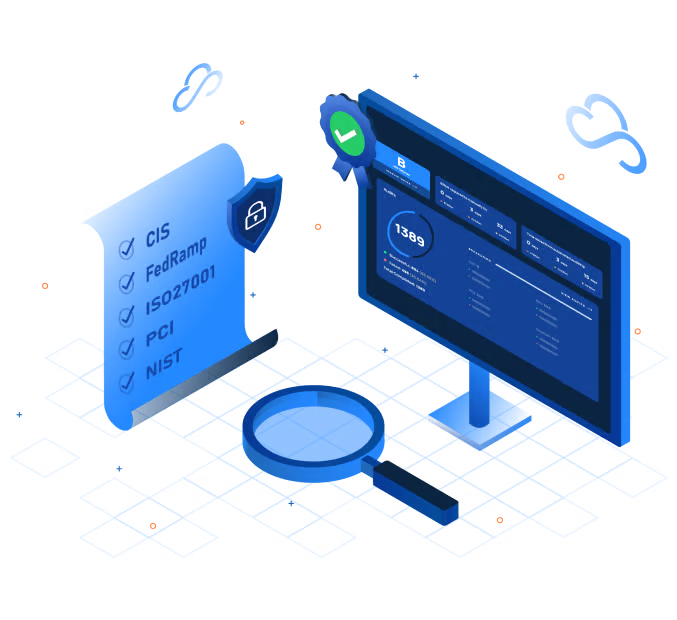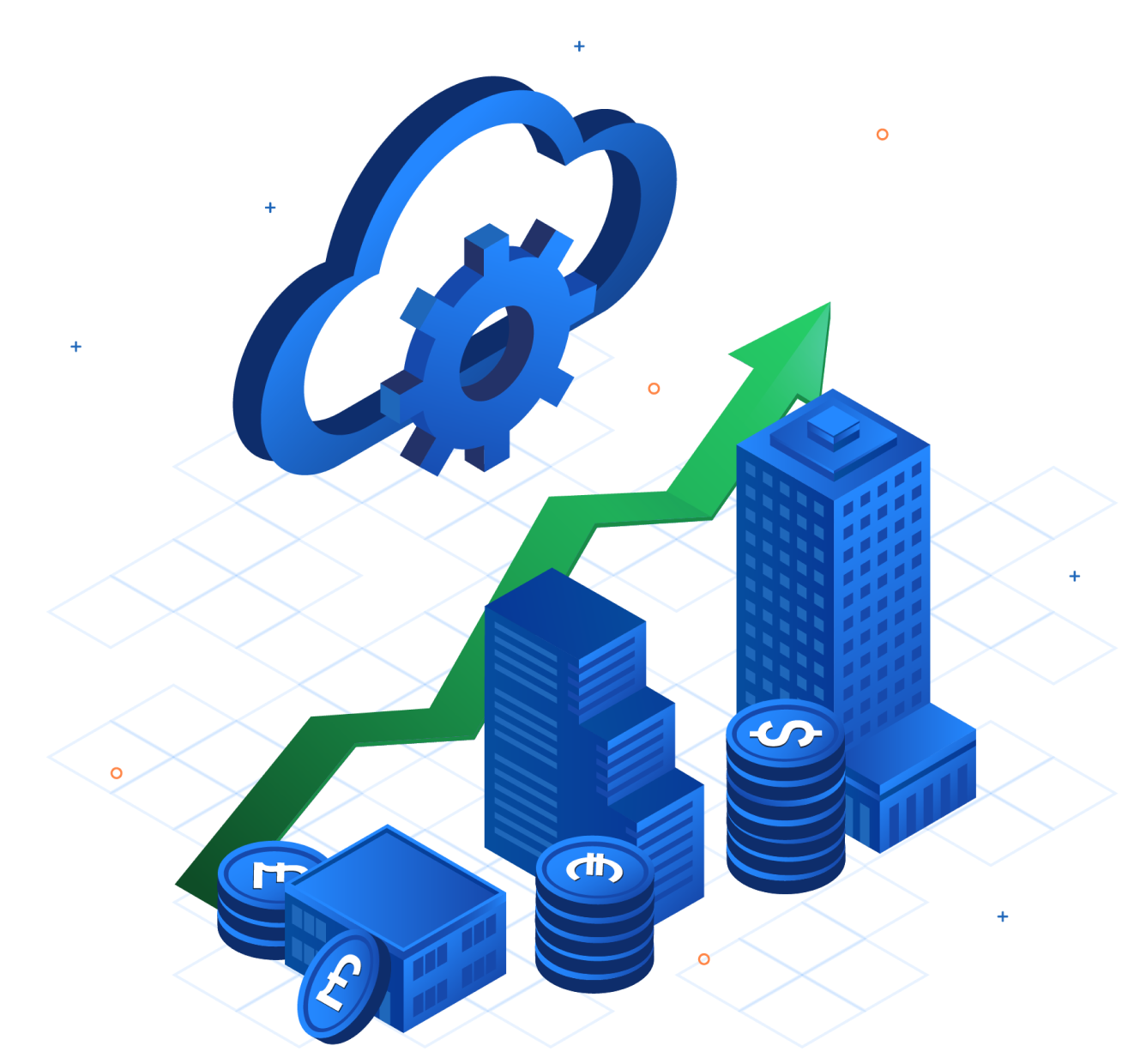The world of cloud computing is vast and dynamic. With giants like AWS, Azure, and GCP leading the forefront, there’s a lot to unpack when it comes to understanding the depth and breadth of services they offer. Each provider brings their own unique strengths, features, and challenges.
Choosing the right cloud provider isn’t just about the numbers; it’s about ensuring compatibility with your business objectives, gauging scalability, reliability, and assessing long-term benefits. This decision is paramount not just for IT professionals but for business strategists looking to harness the full power of the cloud.
In this blog post, I aim to bring clarity to the offerings of AWS, Azure, and GCP, providing you with an unbiased view. Together, we’ll explore each platform’s specifics, so you’re well-equipped to make the best choice for your cloud endeavors.
AWS (Amazon Web Services)
Overview:
Amazon Web Services, commonly known as AWS, pioneered the cloud services arena. Introduced in 2006, AWS’s foray into cloud computing offered a wide array of web-based services. Over the years, it has not only expanded its offerings but has also captured a significant share of the cloud market.
Key Services and Strengths:
- EC2 (Elastic Compute Cloud):
EC2 has redefined how businesses view virtualization. Offering virtual servers in the cloud, it provides scalable compute capacity. Bypassing the need for physical hardware means that businesses can deploy applications and workloads faster. - S3 (Simple Storage Service):
AWS’s S3 is a reliable storage solution, providing scalable object storage. It is particularly favored for backup, archival, and analytics. With its high durability and fault tolerance, S3 remains a trusted choice for enterprise-level data storage. - RDS (Relational Database Service):
Database operations are simplified with RDS. Supporting several database engines such as MySQL, PostgreSQL, MariaDB, Oracle, and SQL Server, RDS allows users to maintain multiple database instances with ease. - Lambda:
Embracing serverless computing is effortless with Lambda. It allows for code execution without the hassles of managing servers. Plus, its billing structure is based on compute time, making it both efficient and cost-effective.
Unique Features & Differentiators:
- AWS Marketplace:
AWS Marketplace boasts a meticulously curated digital catalog, tailor-made for software and service discovery. Their Marketplace features over 8,000 software listings from 1,600+ independent software vendors, in comparison to Azure’s Marketplace which is home to over 17,000 apps and services, wand and GCP’s Marketplace which offers more than 2,000 solutions. While AWS doesn’t have the highest number of listings, it seamlessly bridges diversified offerings with its vast ecosystem, providing a unique balance for its users.
- Global footprint with extensive data centers:
A global presence is crucial for cloud services, ensuring data availability, redundancy, and optimized latency. As of 2021, AWS led the charge with 77 Availability Zones across 24 geographic regions, with plans to add more. Azure, not far behind, reported 60+ regions, making it the cloud provider available in the most countries. GCP had a presence in 24 regions with 73 zones. AWS’s dominance isn’t strictly in sheer numbers but also in its mature infrastructure, which many businesses have come to rely on.
- Depth and breadth of service offerings:
AWS, with its pioneering status in the cloud realm, offers an expansive service catalog, boasting 200+ services as of 2021. This spans from foundational compute and storage solutions to nascent technologies like quantum computing. In comparison, Azure and GCP, while offering a comprehensive range of services, have their notable strengths in specific domains, such as Microsoft-integrated solutions for Azure and data analytics & machine learning for GCP.
Azure (Microsoft Azure)
Overview:
Microsoft Azure, often just referred to as Azure, is Microsoft’s cloud computing platform. Since its debut in 2010, Azure has grown exponentially, riding on the back of Microsoft’s vast enterprise customer base. It has matured into a comprehensive suite of cloud services, catering to various business requirements, from simple web hosting to complex machine learning algorithms.
Key Services and Strengths:
- Virtual Machines (VMs):
Azure’s VMs offer scalable computing resources. With a range of available Windows and Linux-based configurations, businesses can swiftly deploy applications in the cloud. - Azure Blob Storage:
Blob Storage handles vast amounts of unstructured data, from text to multimedia content. Its durability, scalability, and data protection features make it ideal for data lakes, backups, and analytics. - Azure SQL Database:
This managed relational database service brings SQL Server’s capabilities to the cloud. It boasts built-in intelligence that learns app patterns and optimizes performance for you, ensuring smooth operations. - Azure Kubernetes Service (AKS):
With AKS, Azure offers a managed Kubernetes container orchestration service. It simplifies deploying, managing, and scaling containerized applications using Kubernetes.
Unique Features & Differentiators:
- Integration with Microsoft Products:
One of Azure’s standout features is its seamless integration with Microsoft’s product suite. Be it Office 365, Dynamics, or Windows Server, Azure offers native integrations, making it a favorite for businesses already invested in the Microsoft ecosystem. - Hybrid Capabilities:
Azure’s strength lies in its robust hybrid cloud capabilities. With Azure Stack, businesses can bring Azure cloud capabilities to local data centers, offering flexibility and ensuring regulatory compliance. - Enterprise Agreement Advantage:
For enterprises that have existing contracts with Microsoft (like Enterprise Agreements), there are often cost benefits when adopting Azure, making the transition to the cloud more financially palatable.
Google Cloud Platform (GCP)
Overview:
Emerging from Google’s own need for global-scale services, Google Cloud Platform, or GCP, is a testament to the tech giant’s profound insights into data management, analytics, and open-source technologies. Launched in 2011, GCP has carved its niche in the cloud arena by leveraging Google’s strengths in big data, machine learning, and open-source technologies.
Key Services and Strengths:
- Compute Engine:
GCP’s Infrastructure as a Service (IaaS) offering, Compute Engine allows users to run virtual machines in the cloud, supporting a variety of OS choices and size configurations. - Google Kubernetes Engine (GKE):
Tapping into Google’s prowess in container orchestration (after all, they did create Kubernetes), GKE provides a managed environment for deploying, managing, and scaling containerized applications. - BigQuery:
BigQuery stands out as a serverless, fully-managed, and highly scalable data warehouse that facilitates super-fast SQL analytics across large datasets. Its real-time analysis capability, coupled with its serverless nature, is a game-changer for many businesses. - Cloud Storage:
GCP’s Cloud Storage offers object storage with unmatched load speed and frequency, making it an excellent solution for data archival, backup, and storage for web and mobile applications.
Unique Features & Differentiators:
- Open Source Engagement:
GCP has shown a significant commitment to open-source platforms. Their contributions to the Kubernetes project and TensorFlow, an open-source machine learning framework, underscore their dedication to fostering open-source ecosystems. - Data and Analytics Prowess:
Google’s expertise in data analytics and machine learning shines through in GCP. Tools like TensorFlow, Dataflow, and Datalab are optimized for unmatched data processing and analytics prowess. - Live Migration of Virtual Machines:
GCP is among the few cloud providers that offer live migration of virtual machines. This means, during scheduled maintenance or unforeseen downtimes, VMs can be moved to another host in the same data center, ensuring uninterrupted service.
Pricing Comparison
Navigating the vast world of cloud computing isn’t just about services and features—it’s also about understanding the price tag attached. When it comes to AWS, Azure, and GCP, each provider has a unique pricing structure influenced by various factors. Let’s break down some of the critical points you should consider:
AWS:
- Pay-as-you-go: AWS typically charges for what you use without upfront fees or long-term commitments. This flexible model has been an industry standard.
- Reserved Instances: For services like EC2, businesses can reserve instances for 1 or 3 years, which can substantially lower costs compared to on-demand pricing.
- Savings Plans: AWS offers savings plans that provide discounts to customers committed to consistent usage levels over time.
Azure:
- Pay-as-you-go: Similar to AWS, Azure also adopts a pay-as-you-go model, charging users monthly for the services they’ve utilized.
- Reserved VM Instances: Businesses can reserve virtual machines for a year or more to avail reduced pricing.
- Hybrid Benefit: Azure provides cost-saving opportunities for clients with existing Microsoft licenses, leading to significant savings.
GCP:
- Sustained Use Discounts: Unlike reserved instances, GCP offers discounts for VMs that run for a significant portion of the billing month. These discounts are applied automatically without any upfront fees.
- Committed Use Contracts: For predictable workloads, customers can commit to 1 or 3-year contracts in exchange for hefty discounts.
- Custom VM Types: Instead of selecting a predefined VM size, GCP allows users to tailor VMs to their needs, often leading to cost savings.
Cost-effective strategies:
- Monitoring and alerts: Regularly monitor usage and set up alerts for cost thresholds to avoid bill shocks.
- Clean house: Periodically review and shut down unused resources.
- Leverage free tiers: All three providers offer free tiers for various services—make the most of them during initial stages or for light workloads.
Potential Pitfalls:
- Data transfer costs: Moving data, especially out of the cloud, can be costly. Always factor this in when estimating expenses.
- Underutilized instances: Reserving instances or committing to usage can save money, but only if those resources are utilized optimally.
Usability and Learning Curve
Stepping into the realm of cloud services might feel overwhelming. The dashboard, services layout, documentation quality, and general usability play a pivotal role in shaping your cloud journey. Here’s how our three cloud giants fare in terms of user experience and learning resources:
AWS:
- AWS Management Console: This graphical interface is your gateway to AWS. It’s well-organized, but due to the plethora of services AWS offers, newcomers might initially find it overwhelming.
- Documentation & Tutorials: AWS provides extensive documentation. Their step-by-step tutorials and AWS Whitepapers are a great help for both beginners and expert.
- AWS Training: AWS offers a variety of training resources, including digital and classroom training, videos, self-paced labs, and certification programs
Azure:
- Azure Portal: Microsoft’s Azure Portal is intuitive and integrates seamlessly with other Microsoft products. The dashboard can be customized, enhancing usability.
- Documentation & Tutorials: Azure’s official documentation is detailed and supplemented by Microsoft Learn, a free platform offering various Azure-related courses. .
- Azure Certifications: These are structured paths for those seeking formal recognition of their Azure expertise, catering from fundamentals to advanced levels.
GCP:
- Google Cloud Console: Known for its user-friendly design, GCP’s console is sleek and less cluttered, making navigation relatively easier for newcomers.
- Documentation & Qwiklabs: Google Cloud documentation is comprehensive, and they’ve partnered with Qwiklabs to offer hands-on labs and quests for a practical learning experience.
- Google Cloud Certifications: GCP offers role-based certifications for cloud engineers, architects, and data professionals to validate their expertise.
Key Takeaways:
- Start Small: Instead of diving deep, start with the basics. Explore free tiers, utilize beginner-friendly services, and gradually build your understanding.
- Engage in Communities: All three platforms have a vibrant community. Engage in forums, attend webinars, or join local meetup groups to learn from peers and experts.
- Continuous Learning: The cloud ecosystem is ever-evolving. Regularly update your skills, and stay informed about the latest offerings and best practices.
Security and Compliance
When discussing cloud platforms, security and compliance are paramount. Businesses and individual users alike need assurance that their data, applications, and resources are safeguarded from threats. Let’s delve into how each provider approaches these vital concerns:
AWS:
- Infrastructure Security: AWS adopts a shared responsibility model, where they manage the security of the cloud, and users manage security in the cloud. This includes features like Amazon VPC to isolate resources and AWS Shield for DDoS mitigation.
- Data Protection: AWS offers services such as Amazon S3’s object-level logging and AWS Key Management Service (KMS) for encryption key management.
- Compliance: AWS aligns with multiple compliance programs globally, including PCI-DSS, HIPAA, and GDPR.
Azure:
- Infrastructure Security: Azure, too, follows a shared responsibility model. Azure Security Center provides unified security management, offering advanced threat protection across all Azure services.
- Data Protection: Azure Information Protection and Azure Key Vault stand out, offering sophisticated encryption and management capabilities for data and secrets.
- Compliance: Azure complies with a vast array of global, regional, and industry-specific compliance standards, including ISO 27001, HITRUST, and more.
GCP:
- Infrastructure Security: GCP utilizes a security model built over 15 years and ensures that services are designed, built, and operated with security at the forefront.
- Data Protection: Google Cloud’s encryption at rest is automatic, and they offer tools like Cloud KMS and Cloud HSM to manage cryptographic keys.
- Compliance: GCP supports numerous compliance certifications, ensuring that industries with specific requirements, like health or finance, can safely use their platform.
What Does This Mean For Users?
- Shared Responsibility: Understand the distinction between what the cloud provider protects and what you’re accountable for. Often, the underlying infrastructure is secure, but misconfigurations can expose vulnerabilities.
- Stay Updated: With the dynamic nature of security, it’s crucial to stay abreast of the latest recommendations and updates from your chosen platform.
- Third-party Tools: While native tools are powerful, sometimes third-party security solutions might provide added layers or specialized protections.
Managing your Cloud Environment
AWS, Azure, and GCP have transformed the cloud landscape, each offering a diverse range of strengths, services, and pricing models. However, as your involvement in a multi-cloud environment grows, the task of managing and optimizing resources on these platforms can become more challenging.
Enter Kumoco Cloud Manager (KCM).
KCM eliminates the need to shuffle between different platforms’ interfaces, dashboards, and management tools. Instead, it offers a consolidated and intuitive dashboard for your entire multi-cloud ecosystem. Regardless of whether you’re deploying services on AWS, exploring machine learning capabilities on GCP, or utilizing Azure’s hybrid solutions, KCM ensures that you maintain a clear and comprehensive overview.
Benefits of KCM:
- Real-time Dashboards for Efficiency: A centralized, unified view of your entire cloud estate awaits you with KCM’s real-time dashboards. Efficiently pinpoint areas of potential savings, especially crucial during the early stages of migration. You’ll gain instant insights, allowing for prompt action where needed.
- Simplified Invoicing and Consolidated Billing Data: Scaling up your cloud operations often brings along with it the challenge of managing billing data from multiple platforms. KCM eliminates this hassle, consolidating and simplifying invoicing processes. This feature ensures precise cost allocation across departments, projects, or cost centers, making financial management smoother.
- Advanced Forecasting Tools for Future Planning: Dive into proactive financial management with KCM’s robust forecasting tools. Predict future cloud expenditures and structure your budgets effectively. With KCM, financial transparency and accountability become the cornerstone of your cloud strategy, eliminating unforeseen expenses.
- Seamless Integration and Process Optimization: Integration woes? KCM has you covered. Seamlessly integrating with established processes and ITSM/project management tools like ServiceNow, KCM ensures smooth adoption of cost optimization strategies. Enhance collaboration and keep your workflow uninterrupted.
- End-to-End Compliance Monitoring: For organizations in regulated sectors, compliance is non-negotiable. KCM backs you up with support for established standards and custom rules. Experience continuous monitoring and superior visibility across your cloud landscapes, ensuring you’re always aligned with regulatory requirements.
Conclusion
As we wrap up this in-depth look into AWS, Azure, and GCP, I want to share some personal reflections. Keep in mind, the best cloud provider isn’t about who tops the charts universally, but about which platform aligns best with your specific needs and goals.
AWS: Having been in the game the longest, AWS undoubtedly offers a mature suite of services. It’s the go-to choice for many due to its robust service list, and vast global presence. If you’re looking for depth and a wide array of toolsets, AWS might be your best bet.
Azure: If you’re already invested in Microsoft’s ecosystem, like Office 365 or Windows Server, Azure provides seamless integrations. Its hybrid capabilities are top-notch, and it’s gaining ground quickly, especially in enterprise sectors.
GCP: Google Cloud excels with its analytics, machine learning, and open source technologies. They’re definitely playing catch-up in terms of service breadth, but they’re making promising strides, particularly for data-driven projects.
Choosing Your Provider: It’s essential to evaluate your organization’s specific requirements. Here are some guiding questions:
- What services do you anticipate needing now and in the future?
- Where is your target audience primarily located? (Remember, data center locations can influence latency).
- What’s your budget? Each provider has nuances in pricing that could impact costs based on usage patterns.
- Are there any specific compliance or security requirements to consider?
Lastly, remember that the cloud landscape is ever-evolving. Today’s front-runner might face stiff competition tomorrow. Stay informed, stay adaptable, and always be ready to harness the power of the cloud to your advantage.
To learn more about KCM and how it can enhance your FinOps capabilities, visit kumoco.com or get in touch with our team today. KCM is more than just a tool; it’s your partner in your cloud journey. Start your journey towards optimized cloud management today with Kumoco Cloud Manager.



